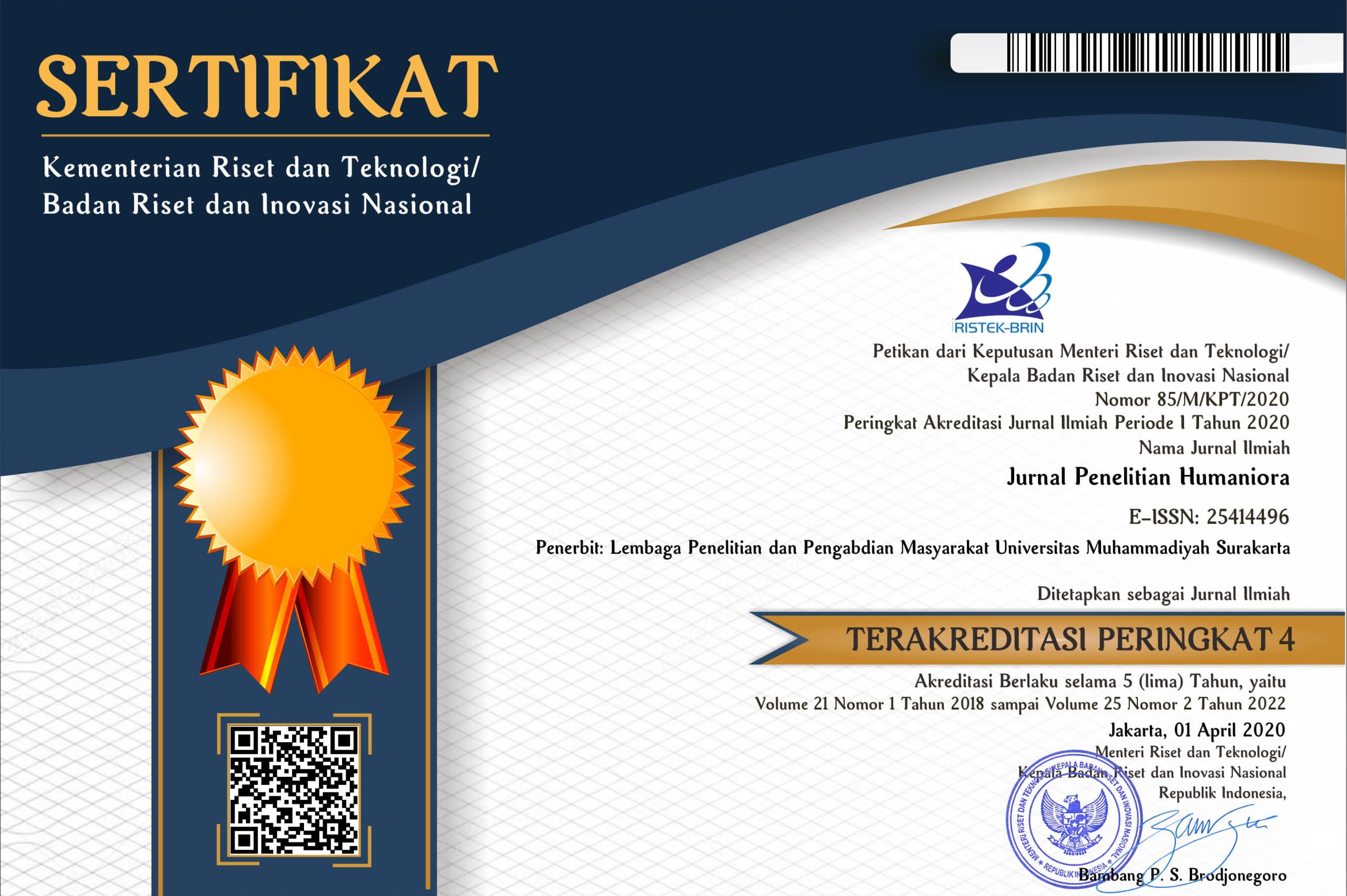IRAN AFTER MAHSA AMINI’S DEATH: REVISITING THE DISCOURSE OF RELIGIOUS AUTHORITY IN ISLAM
Muhammad Faris Ibrahim(1*)(1) Universitas Islam Internasional Indonesia (UIII)
(*) Corresponding Author
Abstract
Keywords
Full Text:
PDFReferences
Ahmad Tafsir. (1998). Filsafat Umum (2nd ed.). PT Remaja Rosdakarya.
Amrizal, A. (2020). Wilayatul Faqih: Landasan, Implementasi, dan Kritik. Zawiyah: Jurnal Pemikiran Islam, 6(2), 318–353. https://doi.org/10.31332/zjpi.v6i2.1627
Buntut Demo Massal, Iran Kaji Aturan Wajib Hijab. (n.d.). Retrieved January 17, 2024, from https://news.detik.com/internasional/d-6443025/buntut-demo-massal-iran-kaji-aturan-wajib-hijab/1
Cohn, W., & Klausner, S. Z. (1962). Is Religion Universal? Problems of Definition. Journal for the Scientific Study of Religion, 2(1), 25–35. https://doi.org/10.2307/1384090
Fatima Alsmadi. (2021). Jadl al- Hijāb fī īrān baina al- Dīnī wa al- Siyāsī. Lubab For Strategic and Media Studies, 9, 106.
Hamdī Zaqzūq, M. (1998). Dirasāt fī al- Falsafah Haditsah (2nd ed.). Dar al- Tiba’at al- Muhammadiyyah.
Hamid, R., Idrus, H., & Hasaruddin, H. (2023). SUNNI AND SHIA: AN APPROACH FROM ISLAMIC THOUGHT. Jurnal Al-Dustur, 6(1), Article 1. https://doi.org/10.30863/aldustur.v6i1.3777
Imarah, M. (1988). Al- Daulah al- Islāmiyyah baina al- Ilmāniyyah wa al- Sulthah al- Dīniyyah (1st ed.). Dar al- Syuruq.
Iran Tinjau Polisi Moral, Reformulasi Penegakkan Syariat Islam. (n.d.). Retrieved January 17, 2024, from https://www.youtube.com/watch?v=rQSrRdmfTSA
Karkazis, J., & Koutsouradi, M. (2023). THE PROTESTS AND RIOTS IN IRAN. International Impact and the Risk of Regime Collapse.
Kupas Channel (Director). (2022, September 24). TRAGEDI MAHSA AMINI | PERSOALAN HUKUM HIJAB DI IRAN DAN PROPAGANDA BARAT. https://www.youtube.com/watch?v=BiYEjuE6Atc
MENGAMATI IRAN APA ADANYA - YouTube. (n.d.). Retrieved January 17, 2024, from https://www.youtube.com/watch?v=um1A11M21xI
Neveen Abdul Malik Mushafa. (2012). Oposisi Islam. LKis.
Puspitasari, R. A., Hutami, P. P. R., Prasyanti, M. D., Nisa, M. A., & Kusuma, F. D. (2022). Juridical Study of the Death of Mahsa Amini Based on Islamic Law and International Human Rights. International Journal of Social Science, Education, Communication and Economics (SINOMICS JOURNAL), 1(5), Article 5. https://doi.org/10.54443/sj.v1i5.68
Setyawan, C. E. (2017). Kritik Abdul Karim Soroush Atas Sistem Al-Faqih: Teks Agama, Interpretasi dan Demokrasi. FIKRAH, 5(1), Article 1. https://doi.org/10.21043/fikrah.v5i1.2258
Uygur, H. (2022). Iran in the Wake of Mahsa Amini’s Death. Insight Turkey. https://www.insightturkey.com/commentaries/iran-in-the-wake-of-mahsa-aminis-death
Zulkarnain, Z. (2011). KONSEP AL-IMAMAH DALAM PERSPEKTIF SYI’AH. Jurnal Tapis: Jurnal Teropong Aspirasi Politik Islam, 7(2), Article 2. https://doi.org/10.24042/tps.v7i2.1535
Article Metrics
Abstract view(s): 274 time(s)PDF: 155 time(s)
Refbacks
- There are currently no refbacks.











